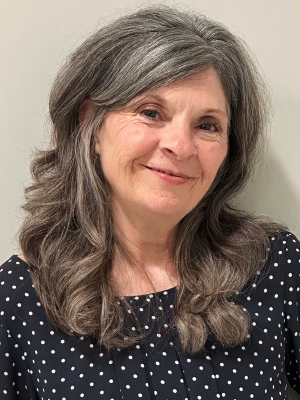
How to Improve Intergenerational Communication: A Guide
“In order to improve intergenerational communication with your audience, invest time trying to understand them.”
Teresa Cooper
You see the need to market your nonprofit or church online. You’re realizing communication isn’t always easy. Even on your best days, you may struggle to get your point across or convey your message. Throw a diverse audience into the mix , and things can really seem challenging—even downright complicated. You know your message is relevant and important, worthy of sharing. You’re passionate about it, and you want to get it across effectively to your audience. But your audience is varied—a mixture of young and old(-er) alike. How can you make sure your message is getting across to and resonating with those you’re reaching? How can you do it in such a way that it bridges the generations? In this article, we’ll talk about how to improve intergenerational communication in order to build trust and relationships with your audience.
But first—
Who’s Your Audience, and Why is That Important?
When thinking about connecting with your audience in meaningful ways, you might quickly realize age is often a subtle barrier, creating hidden challenges.
You have a message to get across, but you’re wondering how to improve intergenerational communication. What approach will you use?
Well, we like the way John C. Maxwell, New York Times best-selling author and leadership authority, explains a solution:, “Great communication depends on two simple skills–context, which attunes a leader to the same frequency as his or her audience, and delivery, which allows a leader to phrase messages in a language the audience can understand.”
Say What?!
Confused? We’re here to help you make sense of what John’s talking about!
In order to improve intergenerational communication with your audience, invest time trying to understand them.
One easy way to do this is by conducting surveys. You can get as general or as specific as you’d like with this helpful tool. One important question to ask your multigenerational participants is simple: Where do you spend your time online? Another great question to ask is what method of communication they prefer.
Once you find out your audience’s preferences, you can tailor your strategy to reach them effectively.
A real advantage of taking the extra time to understand your audience is that it will build relationships and trust as you learn to communicate with them in ways that are meaningful for them. Like any good relationship, it starts with genuine interest.
In addition to addressing the problem of how to improve intergenerational communication, in her LinkedIn article, Michelle Warren notes the issue of different communication styles in audiences. Knowing your people’s communication styles would be helpful for understanding how to relate to them as well.
3 Ws and an H
In any given audience, you’ll have about four different communication styles. Each one of them will have their own preference as to how they like to receive information, as well as one of four central questions they’re looking to have answered:
*Why?
*What?
*Who?
*How?
Most audiences will have a mixture of the four types (about 21-25% each), so keep in mind that you’ll likely have to address all four questions.
You want to get your message across and present it with clear communication. Arming yourself with this information will help as you build your messaging and will help you build credibility with your audience.
If you want them to hear what you have to say, they need to know you’re listening to them.

How to Improve Intergenerational Communication by Choosing the Right Medium for Your Audience
Where is your audience likely to look for your content?
Steve Pulcinella, writing for Forbes, suggests where you distribute your content depends on the audience you’re trying to capture. A key question, then, is which media channel is appropriate for your audience?
Today there’s a whole slew of multi-marketing channels with which to reach your audience, and we’d be happy to discuss them with you.
Before we answer the question about where to engage your audience, let’s take a look at the generations and try to understand them a little better.

How to Improve Intergenerational Communication by Understanding Their Differences
There are currently five generations recognized by the Center for Generational Kinetics (CGK), a research company that works with businesses to solve generational challenges related to sales and marketing.
The CGK has classified the generations in the US as follows:
*1996–: Gen Z, iGen, or Centennials
*1977 to 1995: Millennials or Gen Y
*1945 and before: Traditionalists or the Silent Generation
Each generation has its own preferred method of communication.
By learning more about each group, you can better understand how to improve intergenerational communication through identifying your audience.
For instance:
Gen Z grew up online and has short attention spans. They generally look for bite-sized content and entertaining messaging.
Millennials are similar to Gen Z, being that they’re a tech-savvy generation. They also use social media and like texting
Gen X is more visual, so texting and email work best for them.
Baby Boomers value relationships and prefer in-person communication or phone conversations.
The Silent Generation prefers written communication, but since they also like eye contact, face-to-face communication works well, too.
Each of these preferences demonstrates something important—we can think of the generation gap not as a barrier, but as an opportunity. Each medium of communication offers its own perks and highlights the strengths of each generation. By learning to use them to your advantage, you can bring your audiences into conversation with each other.
So there you have it!
Ready to get started?
We at Amenable have had great success helping churches and small businesses connect with their audiences and drive results.
We’d love to help you!
Contact us to talk about how we can support your content development or marketing/communication needs.

